Analysis of Large Membrane Vibrations Using Fractional Calculus
Abstract
1. Introduction
2. Preliminaries
3. Methodology
3.1. Case 1 (ETDM)
3.2. Case 2 (STDM)
4. Convergence Analysis
Uniqueness and Convergence of ETDM and STDM for Large Membrane of Vibration Equation
5. Numerical Examples
5.1. Example 1
5.2. Example 2
5.3. Example 3
6. Numerical Results and Discussion
7. Conclusions
Author Contributions
Funding
Data Availability Statement
Acknowledgments
Conflicts of Interest
Abbreviations
| ET | Elzaki transform |
| ST | Shehu transform |
| ETDM | Elzaki transformation decomposition method |
| STDM | Shehu transformation decomposition method |
| NTDM | Natural transformation decomposition method |
| RPSM | Residual power series method |
| LDM | Laplace decomposition method |
References
- Suleman, M.; Wu, Q.; Elzaki, T. Explicit Analytic Solution of Vibration Equation for large domain by mean of the Elzaki projected Differential Transform Method. J. Adv. Math. 2015, 11, 5244–5257. [Google Scholar] [CrossRef]
- Chakraverty, S. Vibration of Plates; CRC Press: Boca Raton, FL, USA, 2008. [Google Scholar]
- Sina, S.; Navazi, H.; Haddadpour, H. An analytical method for free vibration analysis of functionally graded beams. Mater. Des. 2009, 30, 741–747. [Google Scholar] [CrossRef]
- Ke, L.-L.; Yang, J.; Kitipornchai, S. An analytical study on the nonlinear vibration of functionally graded beams. Meccanica 2010, 45, 743–752. [Google Scholar] [CrossRef]
- Rao, P.; Mohapatra, D.; Chakraverty, S.; Roy, D. Vibration analysis of non-homogenous single-link flexible manipulator in uncertain environment. Appl. Math. Model. 2025, 141, 115939. [Google Scholar] [CrossRef]
- Gartia, A.K.; Chakraverty, S. Free Vibration of Bi-Directional Functionally Graded Nanobeams Resting on Winkler–Pasternak Foundations. J. Vib. Eng. Technol. 2024, 12 (Suppl. S2), 1929–1945. [Google Scholar] [CrossRef]
- Ni, Z.; Zhu, F.; Fan, Y.; Yang, J.; Hang, Z.; Feng, C.; Yang, J. Numerical study on nonlinear vibration of FG-GNPRC circular membrane with dielectric properties. Mech. Adv. Mater. Struct. 2024, 31, 3756–3775. [Google Scholar] [CrossRef]
- Gartia, A.K.; Chakraverty, S. Advanced computational modeling and mechanical behavior analysis of multi-directional functionally graded nanostructures: A comprehensive review. Comput. Model. Eng. Sci. 2025, 142, 2405–2455. [Google Scholar] [CrossRef]
- Chen, X.; Han, M.; Yang, X.; Wang, B. Stability Analysis of Parametric Vibration in Overhead Conductors Under Time-Varying Tension. Symmetry 2025, 17, 464. [Google Scholar] [CrossRef]
- Ye, Y.; Yin, Z.; Zhu, A. A Mixed Finite Element Method for Vibration Equations of Structurally Damped Beam and Plate. Numer. Methods Partial. Differ. Equ. 2025, 41, e70005. [Google Scholar] [CrossRef]
- Qin, Z.; Lin, Y.; Han, M.; Han, X.; Zhang, X.; He, P.; Gao, X.; Feng, X. Experimental and theoretical investigation on the thermoacoustic-induced vibration in a centrally-staged combustor. Combust. Flame 2025, 273, 113890. [Google Scholar] [CrossRef]
- Khatib, M.N.; Hatip, A. On Refined Netrusophic Fractional Calculus. Int. J. Neutrosophic Sci. 2024, 24, 8–18. [Google Scholar]
- Hilfer, R.; Kleiner, T. Fractional calculus for distributions. Fract. Calc. Appl. Anal. 2024, 27, 2063–2123. [Google Scholar]
- Sahoo, M.; Chakraverty, S. Solitary wave solution for time-fractional SMCH equation in fuzzy environment. In Computation and Modeling for Fractional Order Systems; Academic Press: New York, NY, USA, 2024; pp. 227–239. [Google Scholar]
- Goyal, M.; Prakash, A.; Gupta, S. An efficient perturbation sumudu transform technique for the time-fractional vibration equation with a memory dependent fractional derivative in liouville–caputo sense. Int. J. Appl. Comput. Math. 2021, 7, 1–18. [Google Scholar] [CrossRef]
- Meng, L.; Kexin, M.; Ruyi, X.; Mei, S.; Cattani, C. Haar wavelet transform and variational iteration method for fractional option pricing models. Math. Methods Appl. Sci. 2023, 46, 8408–8417. [Google Scholar] [CrossRef]
- El-Ajou, A.; Abu Arqub, O.; Momani, S. Approximate analytical solution of the nonlinear fractional KdV–Burgers equation: A new iterative algorithm. J. Comput. Phys. 2015, 293, 81–95. [Google Scholar] [CrossRef]
- Kumar, D.; Singh, J.; Baleanu, D. On the analysis of vibration equation involving a fractional derivative with Mittag-Leffler law. Math. Methods Appl. Sci. 2020, 43, 443–457. [Google Scholar] [CrossRef]
- Singh, H. Approximate solution of fractional vibration equation using Jacobi polynomials. Appl. Math. Comput. 2018, 317, 85–100. [Google Scholar] [CrossRef]
- Srivastava, H.; Kumar, D.; Singh, J. An efficient analytical technique for fractional model of vibration equation. Appl. Math. Model. 2017, 45, 192–204. [Google Scholar] [CrossRef]
- Al-Sawalha, M.M.; Alshehry, A.S.; Nonlaopon, K.; Shah, R.; Ababneh, O.Y. Approximate analytical solution of time-fractional vibration equation via reliable numerical algorithm. AIMS Math. 2022, 7, 19739–19757. [Google Scholar] [CrossRef]
- Jena, R.M.; Chakraverty, S. Residual power series method for solving time-fractional model of vibration equation of large membranes. J. Appl. Comput. Mech. 2019, 5, 603–615. [Google Scholar]
- Aghchi, S.; Sun, H.; Fazli, H. Operational matrix approach for solving fractional vibration equation of large membranes with error estimation. Filomat 2024, 38, 2205–2216. [Google Scholar] [CrossRef]
- Adomian, G. Solving Frontier Problems of Physics: The Decomposition Method; Springer Science & Business Media: Dordrecht, The Netherlands, 2013; Volume 60. [Google Scholar]
- Elzaki, T.M. The new integral transform Elzaki transform. Glob. J. Pure Appl. Math. 2011, 7, 57–64. [Google Scholar]
- Elzaki, T.M. On the connections between Laplace and Elzaki transforms. Adv. Theor. Appl. Math. 2011, 6, 1–11. [Google Scholar]
- Elzaki, T.M. On The New Integral Transform “Elzaki Transform” Fundamental Properties Investigations and Applications. Glob. J. Math. Sci. Theory Pract. 2012, 4, 1–13. [Google Scholar]
- Hajira Khan, H.; Khan, A.; Kumam, P.; Baleanu, D.; Arif, M. An approximate analytical solution of the Navier–Stokes equations within Caputo operator and Elzaki transform decomposition method. Adv. Differ. Equ. 2020, 2020, 1–23. [Google Scholar]
- Sedeeg, A.K.H. A coupling Elzaki transform and homotopy perturbation method for solving nonlinear fractional heat-like equations. Am. J. Math. Comput. Model 2016, 1, 15–20. [Google Scholar]
- Neamaty, A.; Agheli, B.; Darzi, R. Applications of homotopy perturbation method and Elzaki transform for solving nonlinear partial differential equations of fractional order. J. Nonlin. Evolut. Equat. Appl. 2015, 2015, 91–104. [Google Scholar]
- Akinyemi, L.; Iyiola, O.S. Exact and approximate solutions of time-fractional models arising from physics via Shehu transform. Math. Methods Appl. Sci. 2020, 43, 7442–7464. [Google Scholar] [CrossRef]
- Khalouta, A.; Kadem, A. A comparative study of Shehu variational iteration method and Shehu decomposition method for solving nonlinear Caputo time-fractional wave-like equations with variable coefficients. Appl. Appl. Math. Int. J. (AAM) 2020, 15, 24. [Google Scholar]
- Maitama, S.; Zhao, W. Homotopy perturbation Shehu transform method for solving fractional models arising in applied sciences. J. Appl. Math. Comput. Mech. 2021, 20, 71–82. [Google Scholar] [CrossRef]
- Shah, N.A.; Dassios, I.; El-Zahar, E.R.; Chung, J.D.; Taherifar, S. The Variational Iteration Transform Method for Solving the Time-Fractional Fornberg–Whitham Equation and Comparison with Decomposition Transform Method. Mathematics 2021, 9, 141. [Google Scholar] [CrossRef]
- Podlubny, I. Fractional differential equations. Math. Sci. Eng. 1999, 198, 41–119. [Google Scholar]
- Chakraverty, S.; Jena, R.M.; Jena, S.K. Time-fractional order biological systems with uncertain parameters. Synth. Lect. Math. Stat. 2020, 12, 1–160. [Google Scholar] [CrossRef]
- Chakraverty, S.; Tapaswini, S.; Behera, D. Fuzzy Arbitrary Order System: Fuzzy Fractional Differential Equations and Applications; John Wiley & Sons: Hoboken, NJ, USA, 2016. [Google Scholar]
- Kilbas, A.A.; Srivastava, H.M.; Trujillo, J.J. Theory and Applications of Fractional Differential Equations; Elsevier: Amsterdam, The Netherlands, 2006; Volume 204. [Google Scholar]
- Miller, K.S.; Ross, B. An Introduction to the Fractional Calculus and Fractional Differential Equations; Wiley: Hoboken, NJ, USA, 1993. [Google Scholar]
- Chakraverty, S.; Jena, R.M.; Jena, S.K. Computational Fractional Dynamical Systems: Fractional Differential Equations and Applications; John Wiley & Sons: Hoboken, NJ, USA, 2022. [Google Scholar]
- Podlubny, I. Fractional Differential Equations: An Introduction to Fractional Derivatives, Fractional Differential Equations, to Methods of Their Solution and Some of Their Applications; Elsevier: Amsterdam, The Netherlands, 1998. [Google Scholar]
- Jena, R.M.; Chakraverty, S. Solving time-fractional navier-stokes equations using homotopy perturbation elzaki transform. SN Appl. Sci. 2019, 1, 16. [Google Scholar] [CrossRef]
- Khalid, M.; Sultana, M.; Zaidi, F.; Arshad, U. Application of Elzaki transform method on some fractional differential equations. Math. Theory Model. 2015, 5, 89–96. [Google Scholar]
- Maitama, S.; Zhao, W. New integral transform: Shehu transform a generalization of sumudu and laplace transform for solving differential equations. Int. J. Anal. Appl. 2019, 17, 167–190. [Google Scholar] [CrossRef]
- Belgacem, R.; Baleanu, D.; Bokhari, A. Shehu transform and applications to caputo-fractional differential equations. Int. J. Anal. Appl. 2019, 17, 917–927. [Google Scholar] [CrossRef]
- Khalouta, A.; Kadem, A. A new method to solve fractional differential equations: Inverse fractional Shehu transform method. Appl. Appl. Math. Int. J. (AAM) 2019, 14, 19. [Google Scholar]
- Kanth, A.R.; Aruna, K.; Raghavendar, K.; Rezazadeh, H.; Inc, M. Numerical solutions of nonlinear time fractional Klein-Gordon equation via natural transform decomposition method and iterative Shehu transform method. J. Ocean Eng. Sci. 2021; in press. [Google Scholar] [CrossRef]
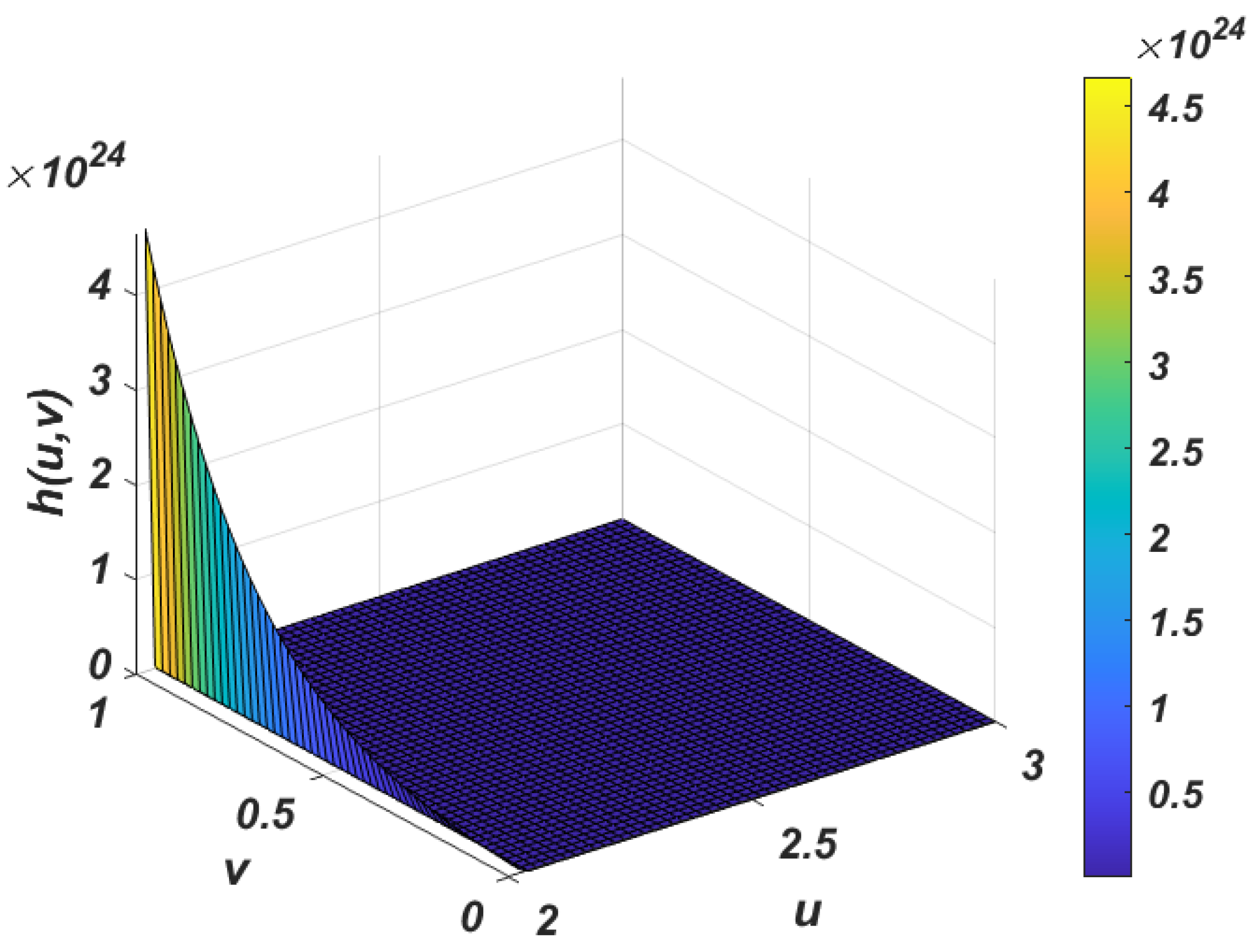

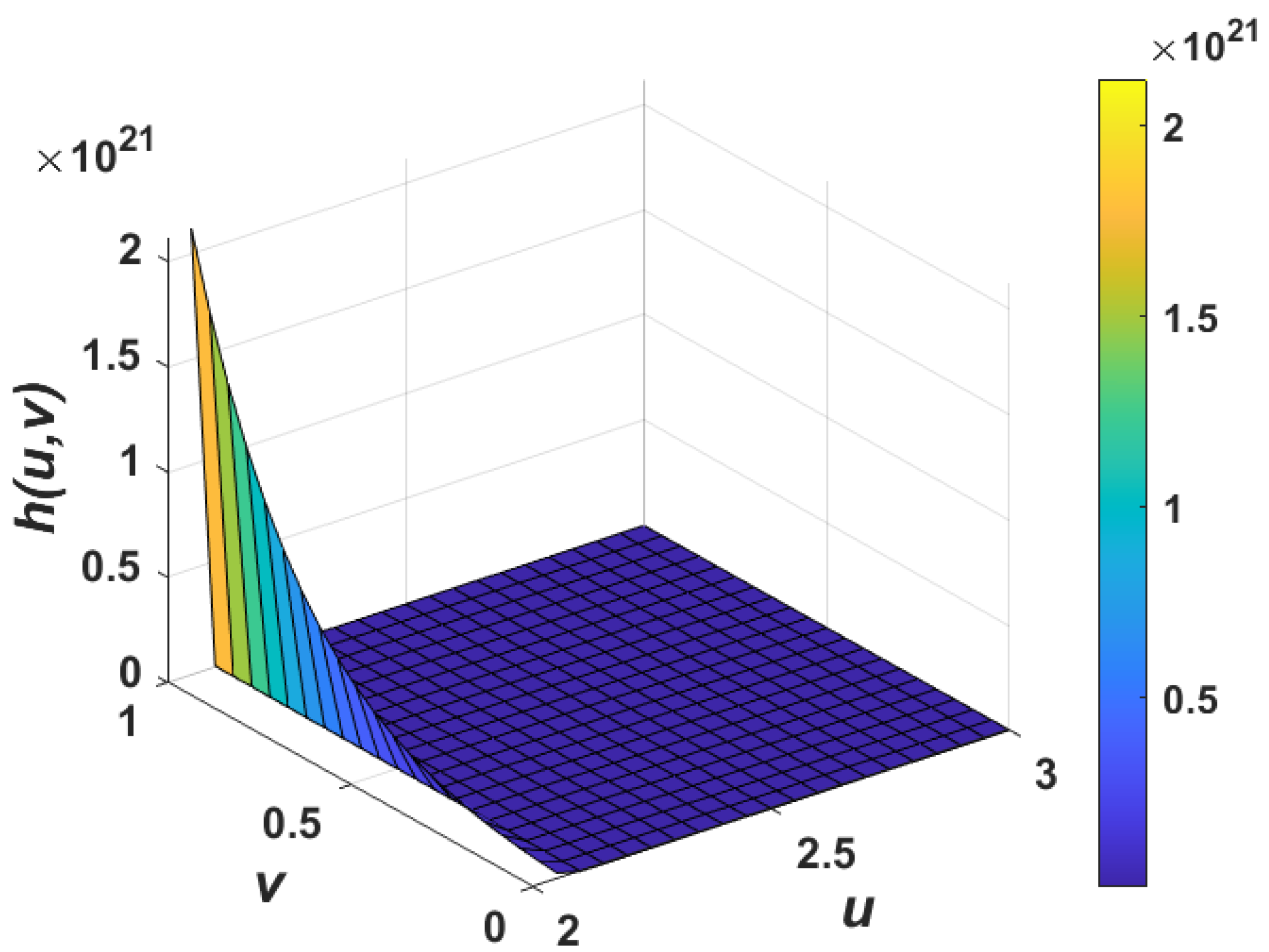
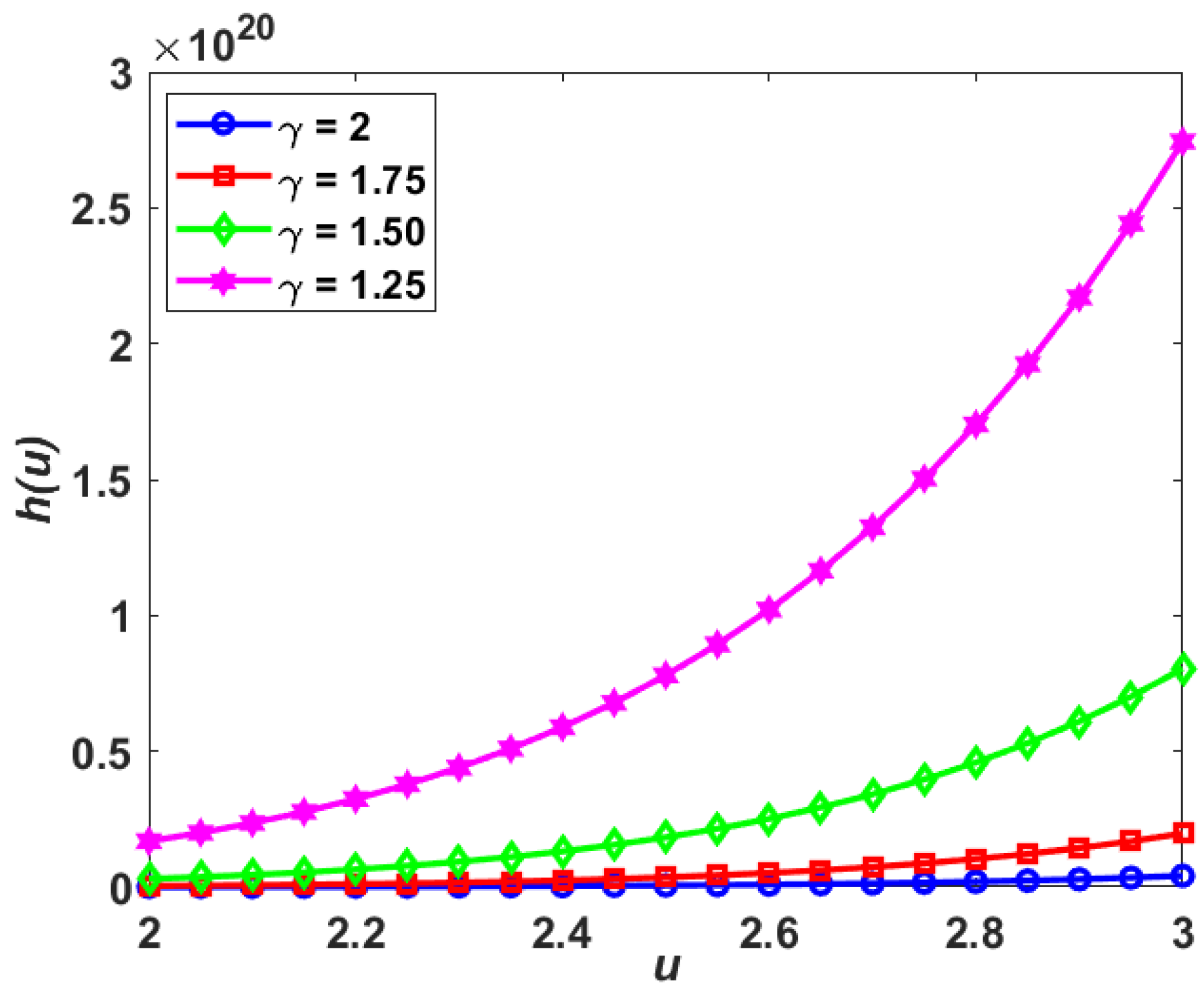
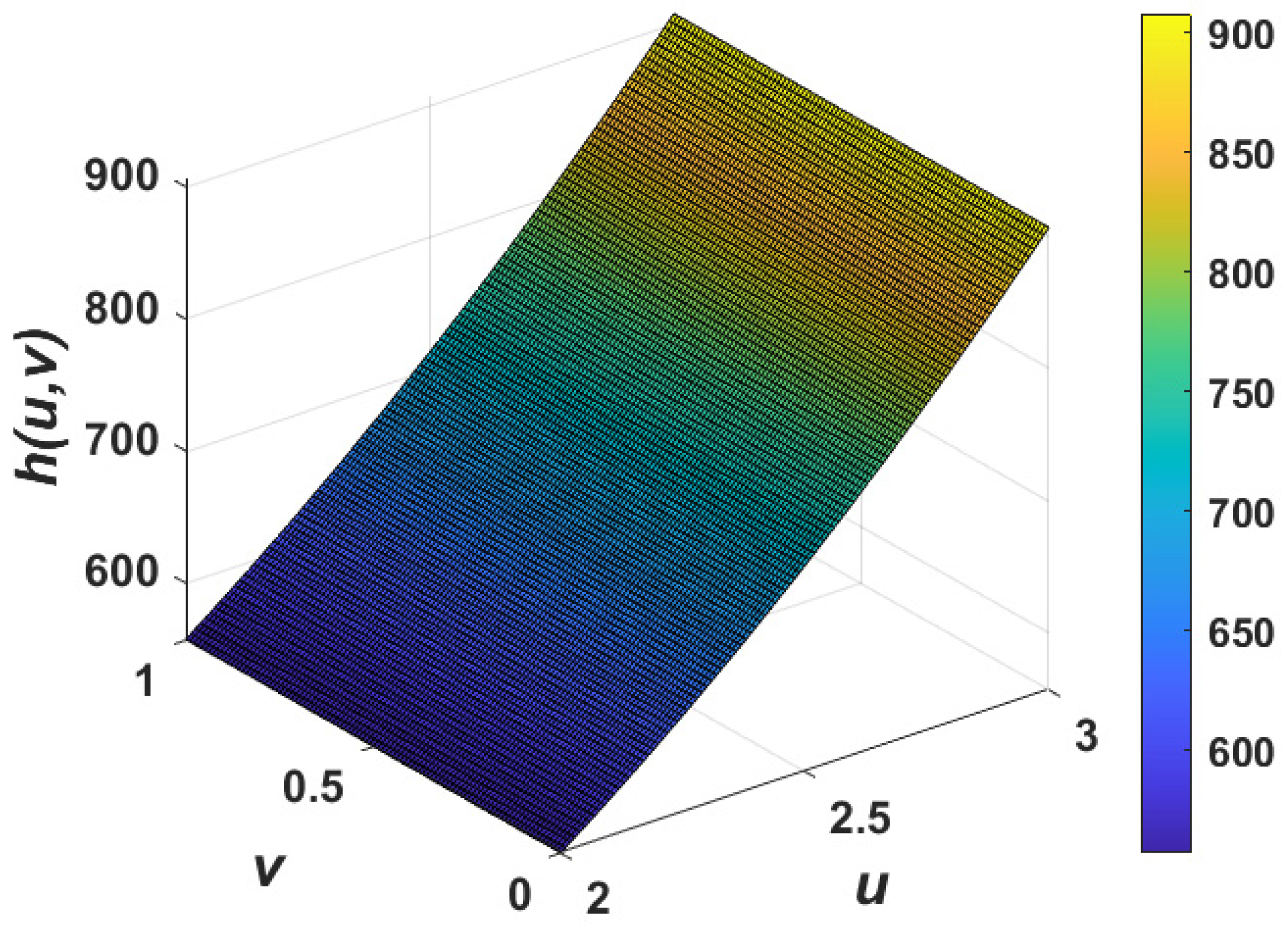
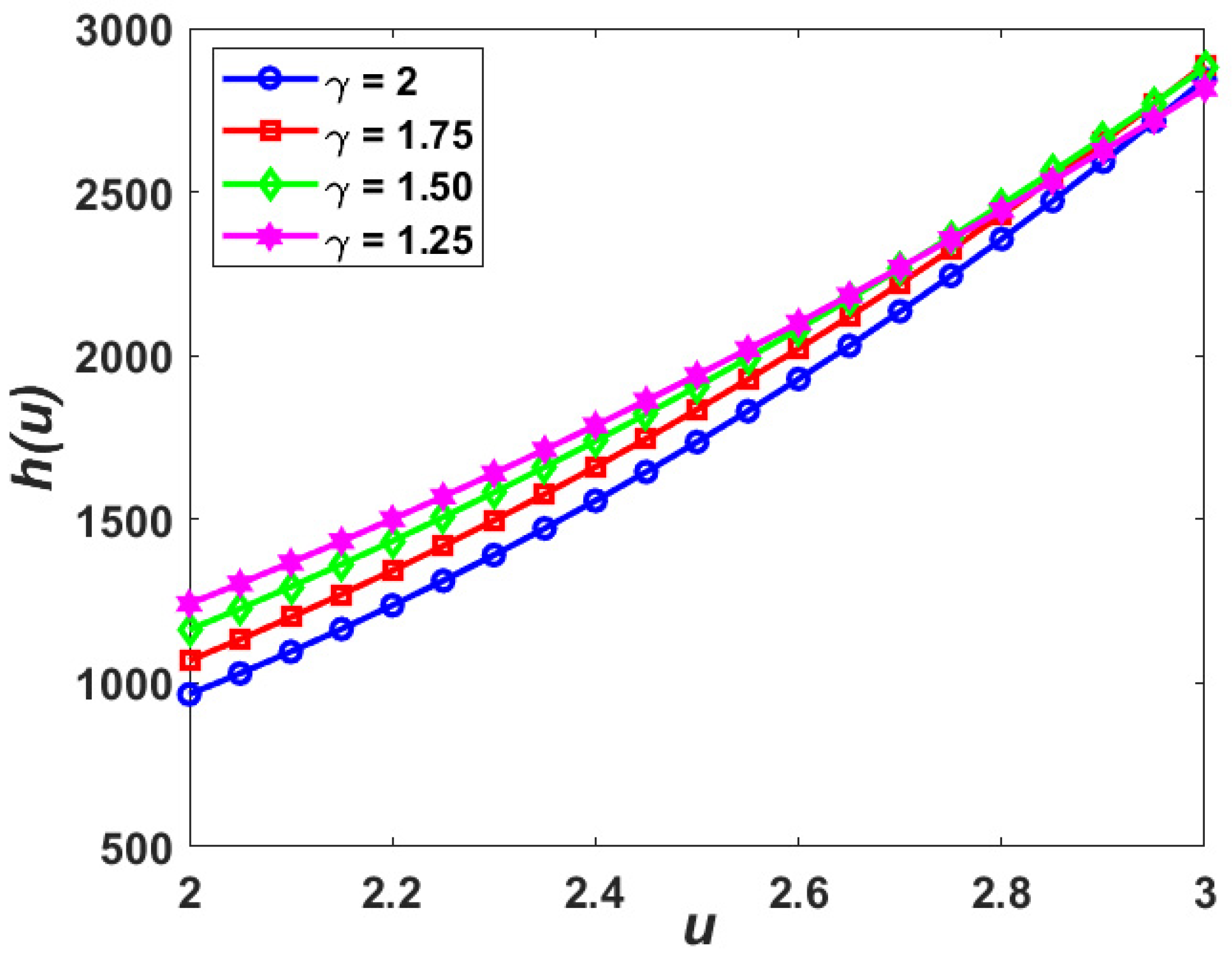
| 0.2 | 1.5 | 48.8406 | 48.8415 | 48.8415 | 48.8415 |
| 2 | 44.0278 | 44.0278 | 44.0278 | 44.0278 | |
| 0.4 | 1.5 | 67.6701 | 67.6820 | 67.6829 | 67.6829 |
| 2 | 56.2234 | 56.2235 | 56.2234 | 56.2234 | |
| 0.6 | 1.5 | 90.7471 | 90.7980 | 90.8153 | 90.8153 |
| 2 | 72.7599 | 72.7598 | 72.7599 | 72.7599 | |
| 0.8 | 1.5 | 117.5902 | 117.6890 | 117.8195 | 117.8195 |
| 2 | 93.8217 | 93.8205 | 93.8216 | 93.8216 | |
| 1 | 1.5 | 148.1551 | 148.0990 | 148.7224 | 148.7224 |
| 2 | 119.6163 | 119.6060 | 119.6150 | 119.6150 |
| 1st Term | 2nd Term | 3rd Term | 4th Term | ||||||
|---|---|---|---|---|---|---|---|---|---|
| 0.2 | 1.5 | 48.8404 | 48.8404 | 48.8414 | 48.8414 | 48.8415 | 48.8415 | 48.8415 | 48.8415 |
| 2 | 44.0277 | 44.0277 | 44.0278 | 44.0278 | 44.0278 | 44.0278 | 44.0278 | 44.0278 | |
| 0.4 | 1.5 | 67.6650 | 67.6650 | 67.6804 | 67.6804 | 67.6824 | 67.6824 | 67.6829 | 67.6829 |
| 2 | 56.2222 | 56.2222 | 56.2234 | 56.2234 | 56.2234 | 56.2234 | 56.2234 | 56.2234 | |
| 0.6 | 1.5 | 90.7096 | 90.7096 | 90.7877 | 90.7877 | 90.8066 | 90.8066 | 90.8153 | 90.8153 |
| 2 | 72.7500 | 72.7500 | 72.7593 | 72.7893 | 72.7598 | 72.7598 | 72.7599 | 72.7599 | |
| 0.8 | 1.5 | 117.4152 | 117.4152 | 117.6621 | 117.6621 | 117.7542 | 117.7542 | 117.8195 | 117.8195 |
| 2 | 93.7777 | 93.7777 | 93.8172 | 93.8172 | 93.8210 | 93.8210 | 93.8216 | 93.8216 | |
| 1 | 1.5 | 147.4940 | 147.4940 | 148.0968 | 148.0968 | 148.4109 | 148.4109 | 148.7224 | 148.7224 |
| 2 | 119.4722 | 119.4722 | 119.5927 | 119.5927 | 119.6107 | 119.6107 | 119.6150 | 119.6150 | |
| Example 1 | Example 2 | Example 3 | |||||
|---|---|---|---|---|---|---|---|
| 0.2 | 1.5 | 48.8415 | 48.8415 | 12.3976 | 12.3976 | 81.4197 | 81.4197 |
| 2 | 44.0278 | 44.0278 | 12.1113 | 12.1113 | 74.6667 | 74.6667 | |
| 0.4 | 1.5 | 67.6829 | 67.6829 | 19.4835 | 19.4835 | 142.2552 | 142.2552 |
| 2 | 56.2234 | 56.2234 | 18.5600 | 18.5600 | 121.3333 | 121.3333 | |
| 0.6 | 1.5 | 90.8153 | 90.8153 | 27.4697 | 27.4697 | 220.9154 | 220.9154 |
| 2 | 72.7599 | 72.7599 | 25.5268 | 25.5268 | 180.0000 | 180.0000 | |
| 0.8 | 1.5 | 117.8195 | 117.8195 | 36.7233 | 36.7233 | 319.9498 | 319.9498 |
| 2 | 93.8216 | 93.8216 | 33.2122 | 33.2122 | 254.6667 | 254.6667 | |
| 1 | 1.5 | 148.7224 | 148.7224 | 47.8953 | 47.8953 | 441.6758 | 441.6758 |
| 2 | 119.6150 | 119.6150 | 41.8518 | 41.8518 | 349.3333 | 349.3333 | |
Disclaimer/Publisher’s Note: The statements, opinions and data contained in all publications are solely those of the individual author(s) and contributor(s) and not of MDPI and/or the editor(s). MDPI and/or the editor(s) disclaim responsibility for any injury to people or property resulting from any ideas, methods, instructions or products referred to in the content. |
© 2025 by the authors. Licensee MDPI, Basel, Switzerland. This article is an open access article distributed under the terms and conditions of the Creative Commons Attribution (CC BY) license (https://creativecommons.org/licenses/by/4.0/).
Share and Cite
Mallick, N.R.; Chakraverty, S.; Jena, R.M. Analysis of Large Membrane Vibrations Using Fractional Calculus. Fractal Fract. 2025, 9, 219. https://doi.org/10.3390/fractalfract9040219
Mallick NR, Chakraverty S, Jena RM. Analysis of Large Membrane Vibrations Using Fractional Calculus. Fractal and Fractional. 2025; 9(4):219. https://doi.org/10.3390/fractalfract9040219
Chicago/Turabian StyleMallick, Nihar Ranjan, Snehashish Chakraverty, and Rajarama Mohan Jena. 2025. "Analysis of Large Membrane Vibrations Using Fractional Calculus" Fractal and Fractional 9, no. 4: 219. https://doi.org/10.3390/fractalfract9040219
APA StyleMallick, N. R., Chakraverty, S., & Jena, R. M. (2025). Analysis of Large Membrane Vibrations Using Fractional Calculus. Fractal and Fractional, 9(4), 219. https://doi.org/10.3390/fractalfract9040219








